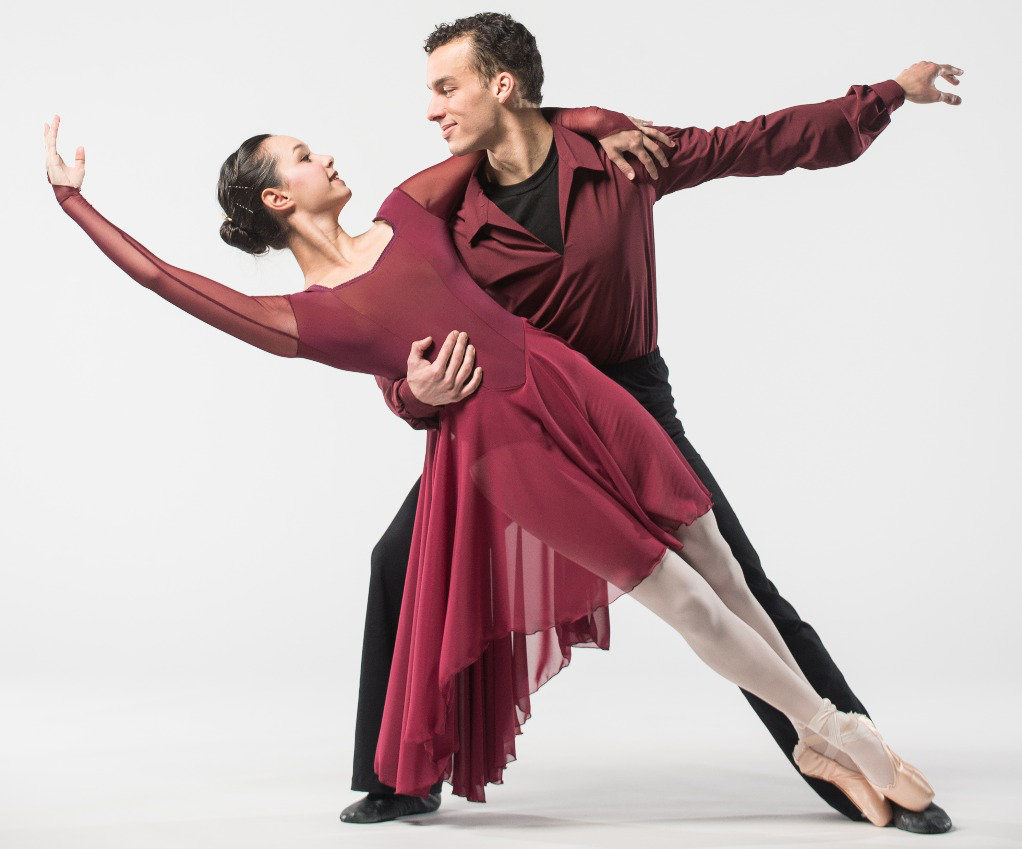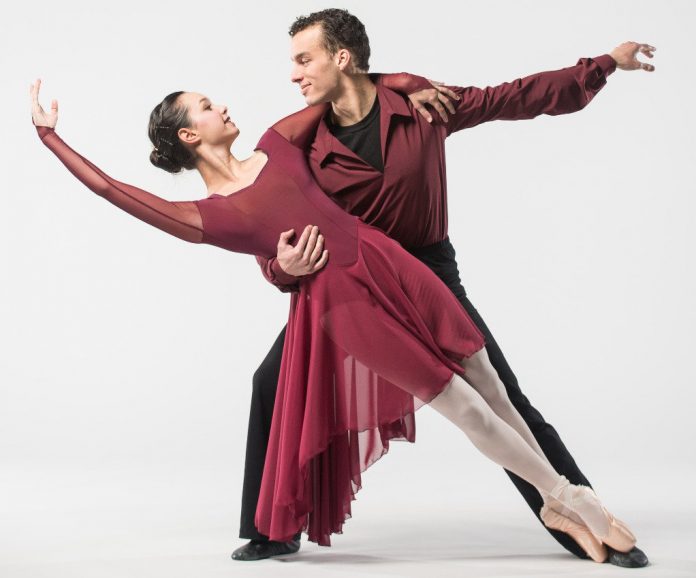
There’s nothing quite like an evening of culture and beauty, especially when it comes to seeing a live show. Of course, a ticket for the ballet or the opera at Lincoln Center in New York will set you back quite a bit. Fortunately, if you’re a student at Muhlenberg College, you don’t have to spend hundreds of dollars to see high-quality, passionate performances. Master Choreographers, which took place Feb. 9-11 in the Empie Theater in the Center for the Arts, was a truly magi- cal, transcendent experience.
There were seven acts in total, each one more stunning and thought-provoking than the last. Utilizing many different styles of dance, from ballet to modern to tap, talented members of the Muhlenberg College Theatre and Dance department spent months rehearsing and preparing for this illustrious performance. The show brought to mind the Disney animated films Fantasia (1940) and Fantasia 2000 (2000), which took animated stories and set them to timeless pieces of classical music. The choreographers and dancers each managed to tell stories without the need for spoken dialogue, encompassing those universal thoughts and feelings for which mere words have never been able to describe.
Four numbers were featured in the first act of the show. The recital began with a ballet piece entitled “Without Words,” choreographed by American ballet legend Trinette Singleton and set to operatic selections from Giacomo Puccini and Giuseppe Verdi. The dancers were clad in burgundy dresses that floated around them like flow- ing wine. The sequence was haunting and lyrical, telling a romantic story of love and friendship. The dancers moved as a cohesive unit, work- ing off one another and performing breathtaking feats of strength attain- able only after years of practice and training.
Following “Without Words” was New York-native choreographer Orion Duckstein’s “When We Fly,” split into six sections that worked with excerpts from “L’estro Armonico, Op. 3” by Antonio Vivaldi and “Laetatus Sum” by Claudio Monteverdi. This was a modern dance piece that was earthy and harmonious, each of the dancers dressed in simple beige tunics while the backdrop behind them shifted in color depending upon the tone of the music. Some of the movements were almost comedic in their laissez-faire tone, which got laughs from the audience. At one point, the dancers ran across the stage high-fiving each other (tricking the audience into thinking the dance was over). The piece was captivating and demonstrated the dancers’ physical stamina and strength.
Heidi Cruz-Austin, a Pennsylvania Ballet veteran, choreographed the next piece, “Clouds: The Mind on the (Re)Wind,” set to music by Ezio Bosso. This ballet number demonstrated an overall sense of urgency and stress; while the moves were frantic and intense, the dancers were still quite graceful. It was notable that this was the first number wherein the dancers were not wearing identical costumes, but were dressed instead in similar styles with slightly different colors.

Muhlenberg Assistant Dance Professor Randall Anthony Smith was responsible for the final number in the first act: an upbeat, funky piece called “Fabric of…” The piece was divided into two parts, set to the songs “Where’s Vicky? (Quantic Mix)” and “Bababatteur (Quantic Mix).” The dancers, clad in similar sky blue shirts and intense fuchsia eyeshadow, owned the stage; they were energetic, passionate, and sassy. The audience was vocal in their admiration, which the performers encouraged. They invoked every part of their bodies, moving their hips and (literally) let- ting their hair down. The dance created a carefree, club-like atmosphere.
The second act opened with a rather dark, heavy piece. “Radical Severance” was choreographed by world-renowned dancer Cristina Per- era, and seemed to demonstrate the harsh reality of unhealthy relation- ships that stem from heavy reliance on another person. Michael Koran’s “Posledni” and Steve Shehan’s “Ver- secret” underscored the performance, which was the only number to use props. The black-clad dancers used gray wooden boxes to stand upon and illustrate power struggles among each other.
The intense darkness of this number was quickly overcome by a shocking, colorful piece called “Jazz Hannah and the Dilemma of the Disappearing Digits” by another Muhlenberg Assistant Dance Professor, Jeffrey Peterson. The number was set to excerpts from the score of the 1988 comedy Who Framed Roger Rabbit, and featured technicolor costumes and wacky hairstyles. The silly story was about Jazz Hannah, one of the dancers who was causing havoc by determining how many fingers each of the other dancers possessed— until they finally declared their independence and rejoiced at having ten fingers total. The best way I could describe this fun, kooky number?A Dr. Seuss fever dream.
The night ended with “Escapades” by Canadian-born tap dancer and choreographer Shelley Oliver. This high-energy tap finale was the only piece that featured live jazz music onstage, a song called “The Cat” by Lalo Schifrin and Rick Ward. A small area in the center of the stage was set aside for the tap dancers with the band playing upstage. Their quick feet and upbeat attitudes made the number the cherry on top of a fantastic evening.
Students in the audience enjoyed the show a great deal. “It’s a stunning performance, excellent choreograph- ing…you can feel the energy behind each dancer,” said Dan Cohen ’17. “Muhlenberg College, once again, showcases its talent,” added Kayla Staub ’17. “The dance department never ceases to amaze me.”
Alumna Edward Bavaria ’16 came to see his girlfriend, Olivia Wood ’17, perform in the show in Jeffrey and Orion’s numbers, and was mightily impressed. “That piece by Jeffrey was crazy…it felt like a mixture of [being] high and going down the rabbit hole with Alice in Wonderland…[Seeing the show as an alumna] is not that much different from when I was a student here—I mean, I have to pay a bit more and my pocketbook is a little bit slim, but other than that, there’s nothing different. I enjoy it just as much; I think I can enjoy it a little bit more be- cause I have an outside perspective.”
Wood was very proud of her performance. “[The experience] has been joyful,” she said after the show. “It’s been an eye-opening experience that’s brought me a lot of joy and I feel like I’ve grown as a dancer as a result. I want people to feel happy, [like] it was worth buying a ticket.”
The performance was a big hit, and I cannot wait to see what else the dance department has in store for us!






















